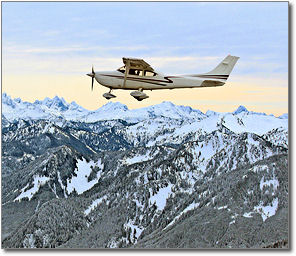Subscriber question:
"Pilots always look to fly direct to their destination to save time, but when is direct not the best option?" - Len G.
Bob:
 “I have often stated that the real key to aviation safety is the range of options open to the pilot. With many options, we are flying with less stress, and that’s always good. Let’s look at a couple of situations.
“I have often stated that the real key to aviation safety is the range of options open to the pilot. With many options, we are flying with less stress, and that’s always good. Let’s look at a couple of situations.
Night flying is a good starting point. While not inherently dangerous, flying at night does constrain our options. Good emergency landing spots are not readily apparent. By choosing an airport-to-airport route rather than a direct route, we may add a few minutes of flying time but provide much more relaxed flying and peace of mind.
Over water legs are yet another time to contemplate our choice of routes. Along with the (lack of) emergency landing options previously mentioned, visual landmarks are absent and can create real situational awareness issues for a VFR pilot. JFK Jr’s flight to Martha’s Vineyard comes to mind. By flying over water for most of his journey, he deprived himself of valuable feedback concerning fog and location.
In these days of enhanced border security, we certainly need to keep in mind our options as we fly along the US northern and southern borders. Even though we have emergency authority to land outside the US if necessary, it may not be the wisest choice if we took more time to plan accordingly.
Unfriendly terrain, whether it be high or just unpopulated, is a reason to avoid a direct routing when we have more user-friendly alternatives.
Flight planning is so very critical no matter how long or short our flight. Take the extra moment to run a few what if’s by yourself to see which routing makes the most sense for you and your passengers.”
